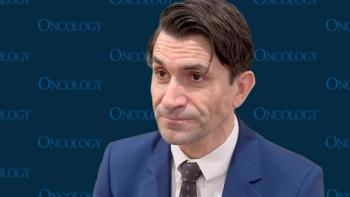
Rationale for Using Cryocompression to Prevent Chemo-Induced Neuropathy
Cryocompression demonstrates potential for preventing chemotherapy-induced neuropathy for those with gynecologic cancers, according to an expert from Duke University Medical Center.
Mary Katherine Montes de Oca, MD, spoke with CancerNetwork® in an interview at
Montes de Oca, an Obstetrics and Gynecology resident at Duke University Medical Center, indicated that cryocompression is a treatment that combines 2 strategies: compression therapy and cryotherapy on the patients’ hands and feet. By inducing vasoconstriction through this process, Montes de Oca states that cryocompression may reduce the likelihood of cytotoxic agents reaching the hands and feet that may cause neuropathy.
Data from a self-controlled trial indicated that patients who underwent cryocompression less frequently experienced moderate to severe symptoms of neuropathy compared with those who did not receive the intervention. At baseline, neuropathy symptoms were identified in 2.2% of cases where cryocompression was not used compared with 3.3% where it was used. At final assessment, the rate of neuropathy symptoms was 13.2% and 7.7% in each respective group.
Transcript:
Cryocompression is a combination of cold therapy and compression therapy on the hands and feet. The proposed mechanism is that the cold therapy and the compression therapy cause vasoconstriction, which then leads to decreased blood circulation to the hands and the feet, and then decreased delivery of chemotherapy or neurotoxic agents that cause neuropathy to the hands and feet.
There are a few options for the prevention of neuropathy. There are some medications that can be used for treatment once a patient is diagnosed with neuropathy. But for prevention, the only other intervention that has really shown promise is cryotherapy—just the cold therapy without the compression therapy. The goal of this study was to look at the two combined.
Reference
Montes de Oca MK, Unnithan S, Erkanli AE, et al. Use of cryocompression to reduce peripheral neuropathy in gynecologic cancer: a randomized controlled trial. Presented at: 2023 SGO Annual Meeting on Women’s Cancer; March 25-28, 2023; Tampa, Florida.
Newsletter
Stay up to date on recent advances in the multidisciplinary approach to cancer.
















































































